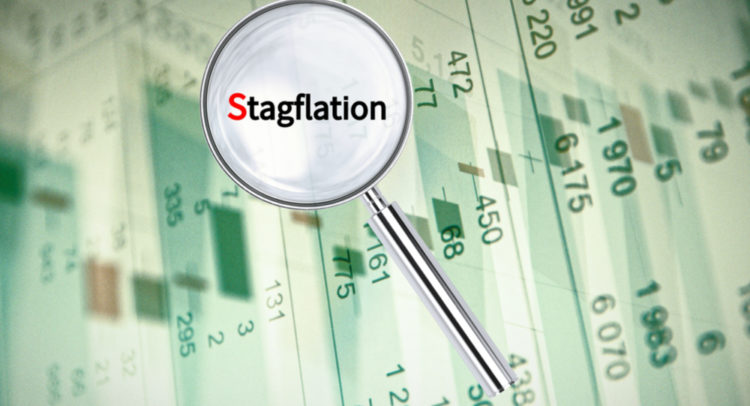A host of economic reports released this week by the U.S. government and private agencies revived fears of stagflation on Wall Street.
Slower Economy Higher Inflation
The advanced GDP report released by the BEA on Thursday morning showed that the U.S. economy lost momentum in Q3 2021. The most comprehensive measure of a nation’s output for a calendar year gained a meager 2% in the third quarter of 2021, down from a 6.7% gain in the second quarter.
Meanwhile, inflation for the goods and services included in the GDP calculations, known as GDP deflator, rose at an annual rate of 5.7% in Q3, confirming that inflation, the old problem of the U.S. economy, remains elevated.
Simply put, the U.S. economy is heading into stagflation, a situation of a slowing economy and rising prices.
Inflation May be Spinning Out of Control
The stagflation scenario was repeated on Friday with new information on the U.S. economy. Personal income, a measure of the pay households bring home from selling their resources to firms and from government benefits, declined at an annual rate of 1% in September, meaning that consumers have less purchasing power going forward. That doesn’t bode well for consumer spending, which counts for two-thirds of GDP.
Meanwhile, the Fed’s most favored inflation index, PCE inflation, rose at an annual rate of 4.4% in September, up from 4.2% in the previous month, meaning that inflation is accelerating.
Then there’s the Employment cost index (wages), which gained 1.5% in September, up from 0.9% in August. Wages have been pushed up in recent months as firms find it hard to compete for workers in a tight labor market, and workers demand higher wages to maintain purchasing power in the face of rising inflation.
Simply put, inflation is beginning to creep into the wage negotiations between households and firms, fueling a price-wage spiral. That’s a classical case of demand-pull inflation and cost-push inflation feeding into each other, which could lead to inflation spinning out of control, as was the case back in the late 1970s.
Bottom Line
While it is too early to determine whether history will repeat itself this time around, one thing is clear: stagflation will be on Wall Street’s radar until new data sheds light on the state of the U.S. economy.
Disclaimer: The information contained in this article represents the views and opinion of the writer only, and not the views or opinion of TipRanks or its affiliates, and should be considered for informational purposes only. TipRanks makes no warranties about the completeness, accuracy or reliability of such information. Nothing in this article should be taken as a recommendation or solicitation to purchase or sell securities. Nothing in the article constitutes legal, professional, investment and/or financial advice and/or takes into account the specific needs and/or requirements of an individual, nor does any information in the article constitute a comprehensive or complete statement of the matters or subject discU.S.sed therein. TipRanks and its affiliates disclaim all liability or responsibility with respect to the content of the article, and any action taken upon the information in the article is at your own and sole risk. The link to this article does not constitute an endorsement or recommendation by TipRanks or its affiliates. Past performance is not indicative of future results, prices or performance.
















